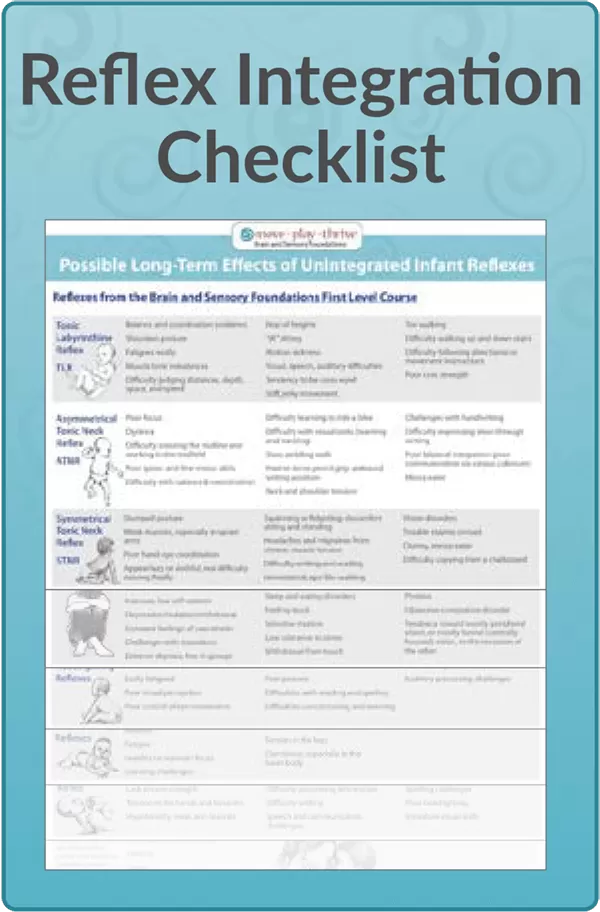Facial-Oral Reflexes
 The Facial-Oral reflexes—rooting, sucking, and swallowing—emerge in the womb and are present at birth. These reflexes ensure proper latching onto the breast, and they are important for soothing, feeding, and survival. Sucking is one of the first innate rhythmic movements and is essential for healthy development and growth.
The Facial-Oral reflexes—rooting, sucking, and swallowing—emerge in the womb and are present at birth. These reflexes ensure proper latching onto the breast, and they are important for soothing, feeding, and survival. Sucking is one of the first innate rhythmic movements and is essential for healthy development and growth.
During rooting, a light touch near the mouth cases a hungry infant to open the mouth and turn toward the stimulus. An infant who has just eaten may not respond to the stimulus. The sucking and swallowing reflexes develop the muscles required for both eating and vocalizing. During proper feeding the muscles of and infant’s face, jaw, and neck are engaged, and the cranial bones are moving. The rooting and sucking reflexes ideally integrate at approximately 3 months, after which these actions are considered learned responses. The swallowing reflex should remain active throughout our lives.
The Facial-Oral reflexes are crucial for developing the muscles of the lips, tongue, pharynx, larynx, and jaw—all of which are needed for speech.
In infancy, the Facial-Oral reflexes are linked to the Hand reflexes and Feet reflexes. For example, infants often knead/grasp with their fingers or toes while they suckle. When these reflexes remain unintegrated beyond infancy, children and adults commonly move the mouth or tongue while writing or engaging in other fine motor tasks. They may exhibit compulsive chewing, or age-inappropriate thumb-sucking. Individuals with retained Facial-Oral reflexes can find it difficult to express themselves clearly and confidently. It may be challenging to give or receive love, or to accept themselves. They may suffer from poor self-esteem, perfectionist tendencies, and a reduced ability to nurture themselves or others.
Possible Long-Term Effects of Unintegrated Facial-Oral Reflexes include:
- Compulsive chewing or sucking
- Thumb-sucking past the age of 5
- Difficulty chewing or swallowing food
- Picky eater, rigid about food choices
- Speech delays, poor articulation
- Hypersensitivity around the mouth
- Persistent drooling
- Poor manual dexterity
- Emotional challenges
- Addictive behaviors
- Amphibian Reflex
- Asymmetrical Tonic Neck Reflex
- Birth and Bonding
- Crawling Reflexes
- Crossed Extensor Reflex
- Facial-Oral Reflexes
- Fear Paralysis Reflex
- Feet Reflexes—Plantar & Babkinski
- Foot Tendon Guard
- Hand Reflexes—Grasp, Palmar, and Babkin
- Headrighting Reflexes
- Infant Torticollis
- Landau Reflex
- Moro Reflex
- Parachute Reflex
- Pull-to-Sit Reflex
- Spinal Galant Reflex
- Spinal Perez Reflex
- Symmetrical Tonic Neck Reflex
- Tonic Labyrinthine Reflex
Sources
Dempsey, M. (2015). Face the fear: RMT and fear paralysis reflex, facial reflexes, language and bonding. [Training manual]
Goddard Blythe, S. (2023). Reflexes, movement, learning & behavior. Analysing and unblocking neuro-motor immaturity. Hawthorn Press.
Goddard Blythe, S. (2004). The well balanced child: Movement and early learning. Hawthorn Press.
Masgutova, S. (2007). Integration of infant dynamic and postural reflex patterns: Neuro-sensory-motor and reflex integration method [Training manual].
Nishino, T. (2013). The swallowing reflex and its significance as an airway defensive reflex. Frontiers in Physiology, 3, 489.


